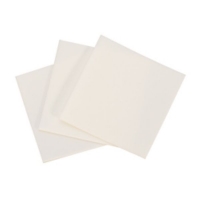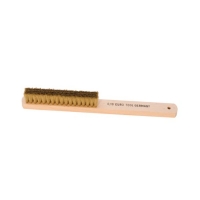Don't Miss
- NEW DVD Series – Stone Setting with Bezels
- Tube Set Charm by Kim St. Jean
- Prong Basket Pendant by Kim St. Jean
- NEW DVD Series – Stone Setting with Cold Connections
- New DVD Series – Stone Setting with Wire
- NEW DVD Series: Introduction to Stone Setting by Kim St. Jean
- Featured Tool: Bracelet Bending Plier
- NEW Dvd by Eva Sherman
- Fun, Fast Fold Forming DVD Series
- Double Band Ear Cuff from Alex Simkin
Polishing Patina
By Judy Ellis on March 4, 2015
by Judy Ellis, Wire-Sculpture.com
Daily Wire Jewelry Tip March 04, 2015
Ultra-Polish Pad and Metal Brush for polishing patina finishes.
We’ve been discussing patinas and finishes over the last week or so… Today I wanted to share two short videos from our good friend Kate Richbourg at JewelryTools.com.
Kate gives you some quick tips on using the Ultra-Polishing Pad* and a Metal Brush to help polish those pieces that you’ve just antiqued with Liver of Sulfur.
Ultra-Polishing Pad:
|
These convenient sized Ultra-Polish Pads are great for removing tarnish, highlighting when using liver of sulfur or silver black, or polishing to a high luster, fast and easy. Leaves no residue. They are made of thin, tight-bond foam with permanently bonded micro-abrasives. A handy, economical polisher that is truly amazing. Squares are 2″ x 2″ and sold in packs of 20.
|
Kate is referencing the Pearl Polishing Pads. At JewelryTools.com we carry the Ultra-Polishing Pad, which is the same type of product.
Metal Brush:
|
This brush is excellent for cleaning or surface texturing on soft metals. It consists of 4 rows of brass bristles in a wooden handle. Made in Germany; 8-5/8″ long.
|
Pick up your Ultra-Polishing Pads and Metal Brush today!
Happy Wrapping!
![]()
Click to Receive Daily Tips by Email





















Jane Elizabeth Duke
March 4, 2015 at 8:28 am
Great tips Judy! It makes one scratch their head though on why in the world anyone would use the brass brush as it seems easier to use the disposable pads! Less muss and fuss! I didn’t hear any good reason to use the brush over the pads unless it is cheaper.
Wendy Hoechstetter
March 6, 2015 at 10:18 pm
Judy, Kate mentioned briefly in the brass brush video that this method leaves more of a matte finish than using the pro-polish pads, and you can see the striations at certain angles as she moves the metal around, which will only increase the more you use it.
From further closely watching what she was doing, it also looks like it doesn’t remove as much of the liver of sulfur, so overall, it appears that you can get completely different effects from each method.
Allida Webb
March 4, 2015 at 2:12 pm
Thank you Kate for your two videos. I will be doing some patina work with both liver of sulfur, and Gilder\’s Paste, I\’ve only read about Gilder\’s paste on maybe a utube video. But I got a great deal on the can\’s of paste. Maybe that could be a follow up video for Kate some time how to use Gilder\’s and then polish it? Kate\’s book \"Simple Soldering\" is still my soldering bible, and with the one class at Bead Fest I got to take last year. Only problem I had was got all new solder paste tubes, and was going to teach what I learned and we could not get the paste to work. What causes failures. I have not had time since class to test the solder further, because of shipments of slabs and a bin of beads to put up are blocking my bench.
Peggy
March 5, 2015 at 4:10 pm
Allida it may simply be that you need to clean the wire or metal that you are attempting to solder.. Sometimes the oil from your hands can play havoc with soldering. You can clean it with a cleaning cloth or drop it in your pickle solution for a few moments and then rinse and dry it. Hope this helps.